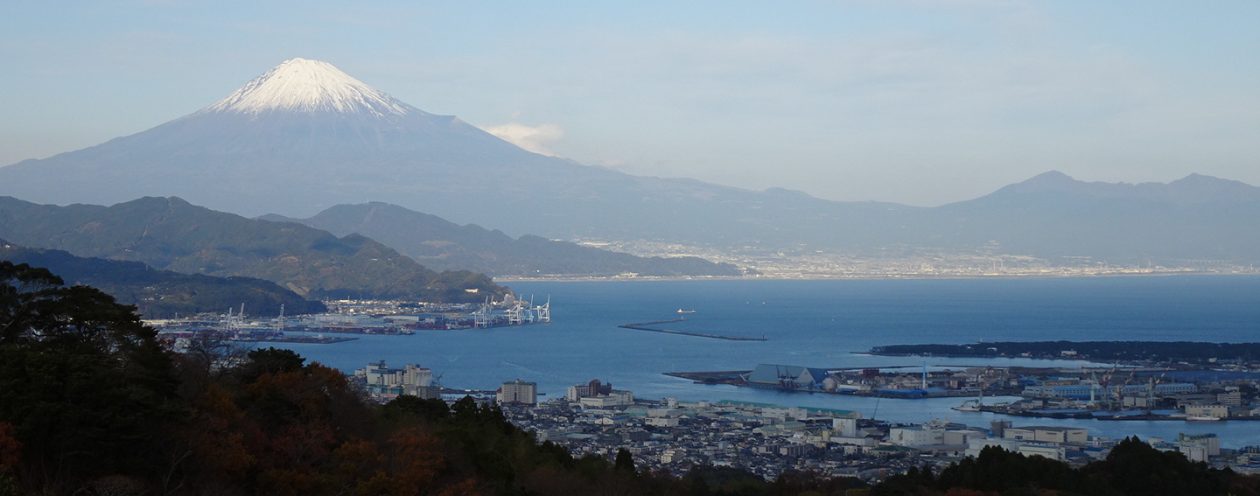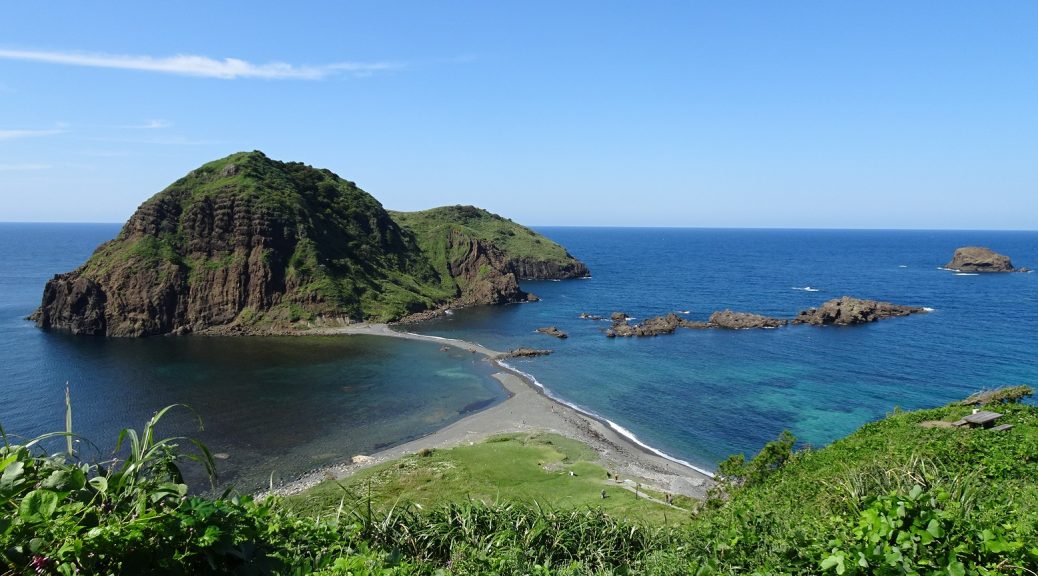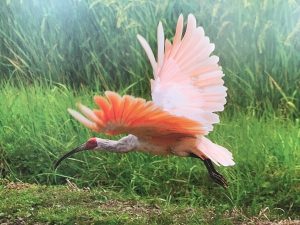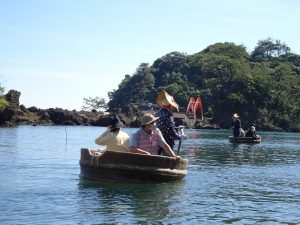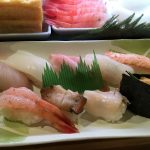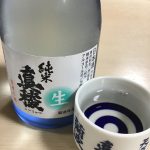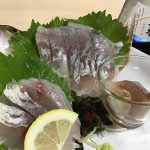N-100 Explore Sado Island!
Nature, History, and the Earth!!
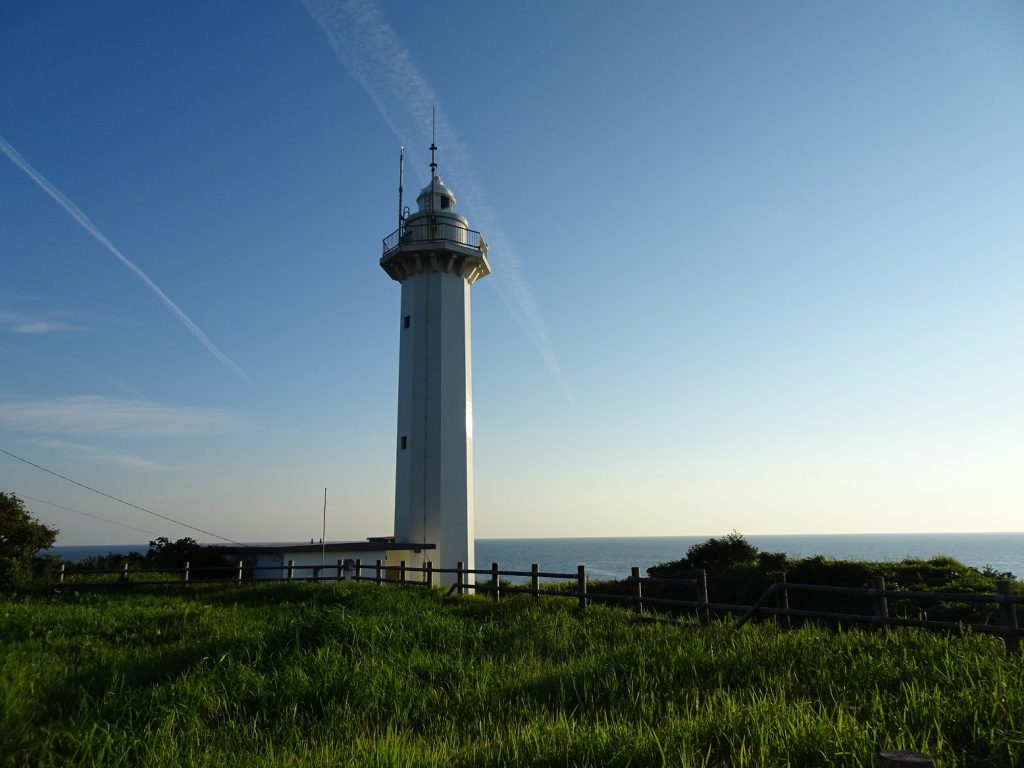
The image of Sado Island that Japanese people have is first of all the “Sado Gold Mine” which was registered as a World Heritage Site in 2024, and for history buffs, it is the place of exile “shima-nagashi” (exile to the island), and for myth lovers, it is the seventh island born before Honshu (main land) in the creation myth of Japan that appears in the “Kojiki” (the oldest historical book). → Please refer to Miyazaki page.
However, Sado Island has a long history, and it is known that people have been living there since about 10,000 years ago (Jomon period).
In addition, in the history of the Earth, when the Japanese archipelago was formed by separating from the Eurasian continent about 20 million years ago, two islands that were created by the uplift of the seafloor connected to form the present shape, therefore we can see traces of earth activity everywhere on Sado, and the island itself was certified as a Japanese Geopark in 2013.
During the Edo period to Meiji period, the island was geographically just the right place to be a stopover point on the long journey of Kitamae-bune ships that mainly traveled through the Sea of Japan, so the island flourished with the traffic of Kitamae-bune ships.
For animation enthusiasts, you can’t miss the “Tarai Bune” experience, which was featured in the animated film Spirited Away (2001).
As you can see, Sado Island is full of historical and geographical attractions.
It is a relatively easy-to-access remote island, located 2.5 hours by ferry or just over an hour by jetfoil from Niigata Port.
We encourage everyone to visit at least once!

Sado Gold Mine
Sado, an island rich in nature, is blessed with mineral resources. During the Edo period (17th to mid-19th century), mining development began in earnest, and it became widely known as an island of gold mines.
The “Sado Gold Mine” was recognized as a unique example in Asia of advanced handicraft mining and smelting techniques in an era when mechanization of mining and other processes was progressing in other parts of the world, and was registered as a World Heritage Site on July 27, 2024.
The Sado Gold Mine is a historic site that conveys 400 years of history. At the Sotayu Mine, dolls are used to faithfully reproduce the mining work of the time. At the Doyu Mine, a group of modern industrial heritage sites from the Meiji period onwards remain. In addition, industrial heritage sites such as “the largest ore-dressing plant in the Orient” and “Japan’s first Western-style vertical shaft” are preserved in good condition in the surrounding area, and you will be amazed by their grand scale.
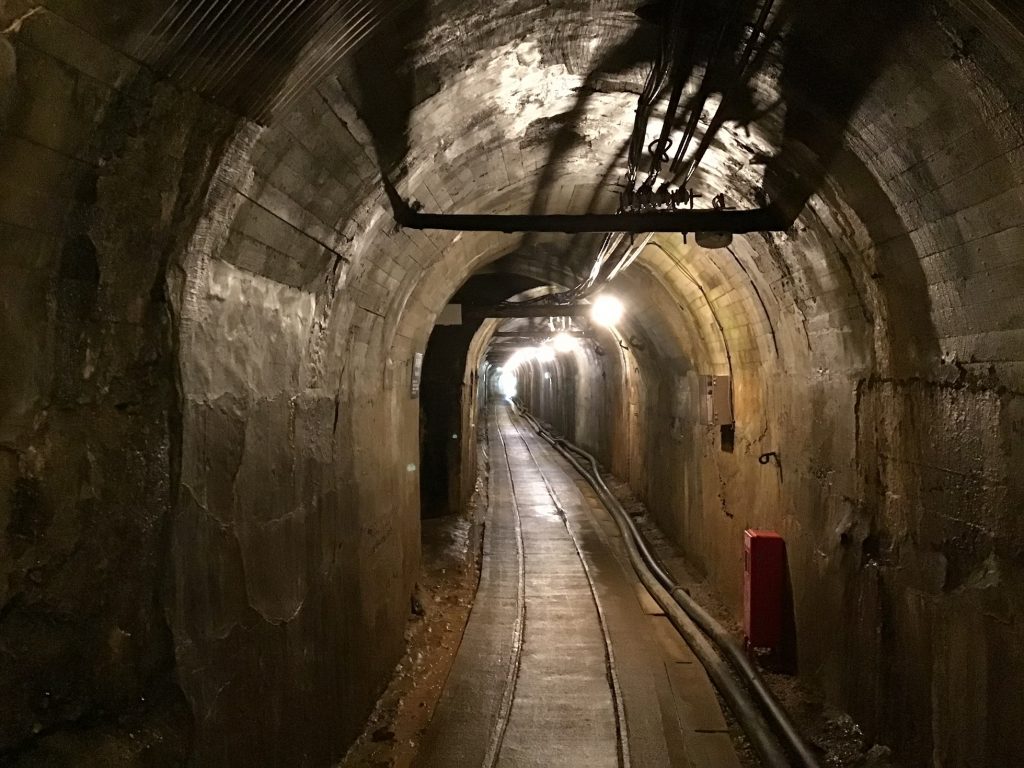
The “Doyu no Wareto” is also said to be the symbol of the Sado Gold Mine. This is the remains of an open-cut mine from the Edo period, which is said to be an early mining site within the Sado Gold and Silver Mine. As the huge gold vein was excavated, the mountain appears to have split into a V shape. The crack at the top of the mountain is approximately 30m wide and 74m deep. It contains a high-quality vein of gold known as the Doyu vein, which is approximately 10m wide, and large-scale development has continued in the lower part of Warito since the Meiji period.
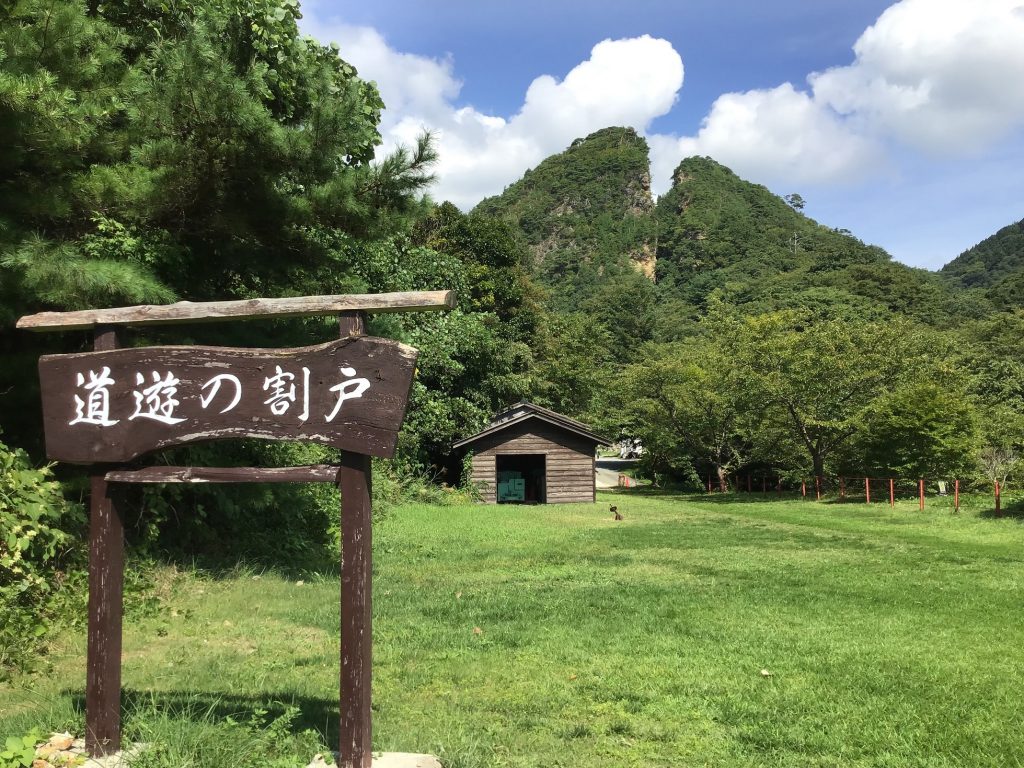
Penal colony of “Shima-nagashi” (island exile)
By the time Japan entered the Nara period (710-784), the government’s power had grown stronger and it began to get involved in the land. At the time, Sado Island was recognized as an independent region, and because it was located far from the mainland (especially Kyoto), it was designated as a place of exile for people considered to be “enemies of Japan (Imperial Court enemies).” By the end of the Middle Ages, there were 70 recorded exiles there, including emperors, religious founders, and cultural figures.
Zeami, who was favored by the third shogun of the Muromachi shogunate, Ashikaga Yoshimitsu, and perfected Noh theater, incurred the wrath of the sixth shogun, Ashikaga Yoshinori, and was exiled to Sado in 1434. In order to spend his time on the island meaningfully, Zeami tried to perfect the stage play “Noh.” Then, Zeami came to be known as the father of Japan’s ancient traditional performing arts. Even today, Sado Island is considered a sacred place for Noh in Japan, and Noh is performed all over the island during festivals and celebrations.
Many of the people exiled to this area were aristocrats and intellectuals, and their livelihood was guaranteed to a certain extent, so apart from the occasional criminal people coming, life on Sado was said to be relatively quiet and peaceful.
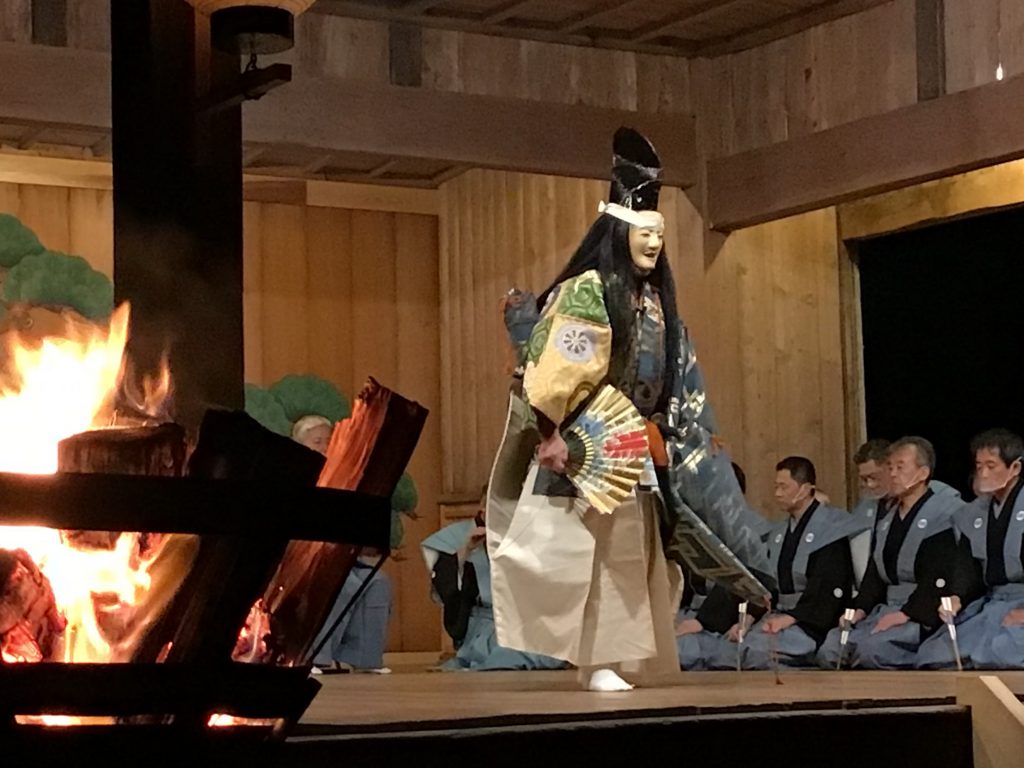
Ports of call for “Kitamae-bune” ships
From the mid-Edo period to the 1890s, the Kitamae-bune ships connected Osaka and Hokkaido. Their role was not simply to transport goods, but to make profits through a unique business method called “kaizumisen,” which involved buying and selling goods at ports of call. They were like mobile trading companies. Echigo (Niigata) and Sado had many ports of call, and as a transit point for logistics and a base for shipbuilding, goods, people, and information gathered there, giving birth to unique cultures and industries in each region.
→ Please refer to Kitamae-bune page
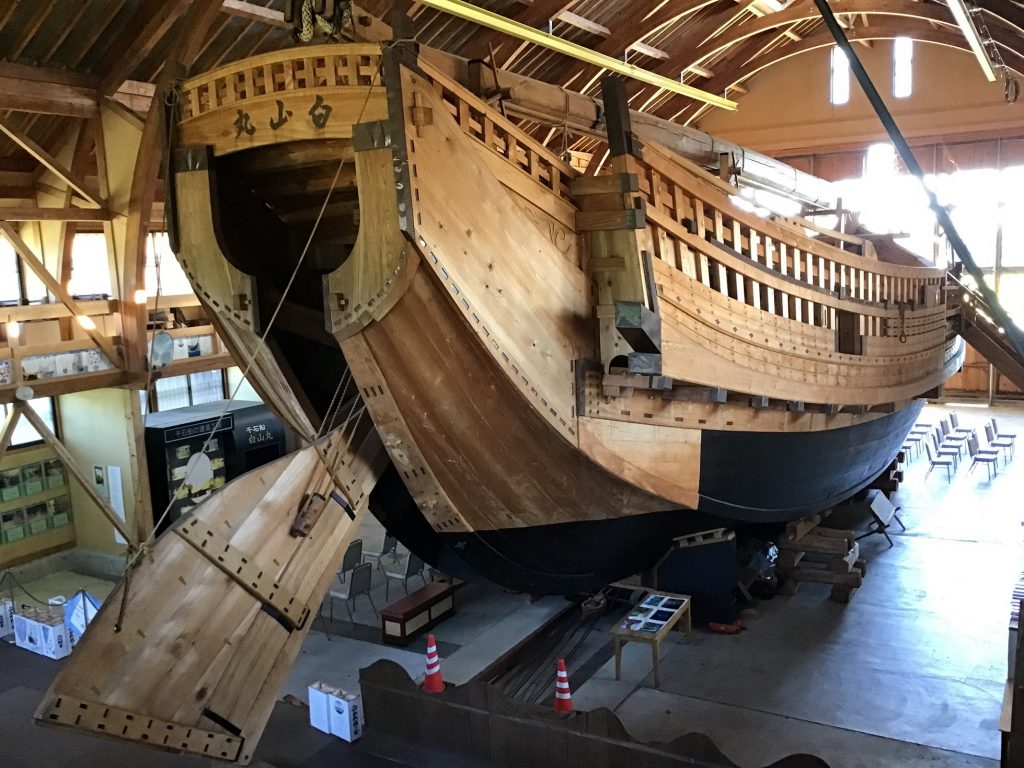
Shukunegi is a district located in the southwest of Sado.
This small settlement of just one hectare developed from the mid-Edo period to the Meiji period as a base for the shipping industry in the Sea of Japan and as a port of call for Kitamae-bune ships, and once prospered to the point that it is said to have collected one-third of Sado’s wealth. The townscape, where shipwrights and other shipbuilding engineers lived in close proximity, still retains traces of its former glory and subsequent decline.
The townscape of Shukunegi was built on a unique culture, and it is a hub of culture brought from all over the country by the Kitamae-bune ships.
Most of the alleys run parallel to the Shokoji River, which flows from north to south through this district, toward the sea, and houses line the alleys. The course of the Shokoji River was artificially created in the early Edo period. Because there was only a small amount of barren land, people at that time decided on the course of the river, divided the roads, and built their houses on the land that was created in between. As a result, there are few square residential lots, and the “triangular house” is a symbol of this.
The triangular house was originally a square building from a neighboring town that was dismantled and moved here, and the wisdom and skills of shipwrights were used to create a building that made the most of the limited land.
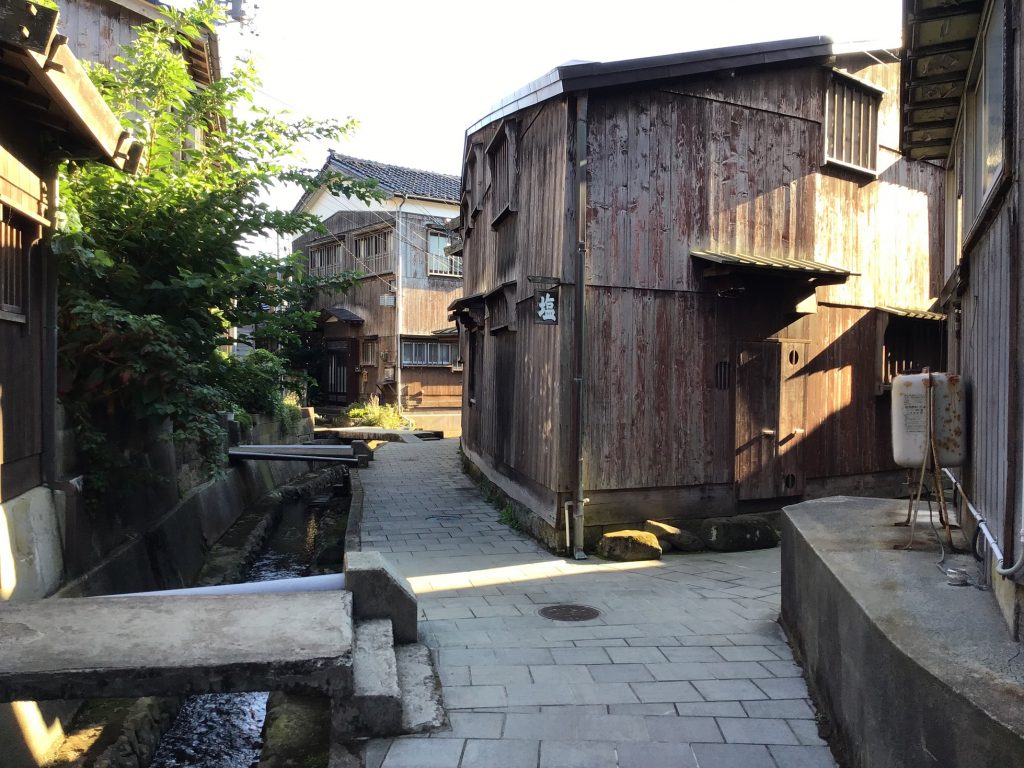
Japanese Geopark
Sado Island, where traces of earth activity can be seen everywhere, is a “geopark throughout the island,” and it is a vast stage where visitors can explore with curiosity while enjoying the connections between the earth, living things, and people’s lives.
The island has a very strange shape. It is sometimes likend to a butterfly or the letter “S.” The origins of Sado Island provide clues to the questions of why gold can be found on Sado, why it is the home of Japan’s last crested ibis, and why there are tub boats.
The rocks that make up the land of Sado include rocks that are about 300 to 200 million years old and were added to the edge of the continent by plate movement, rocks that are about 30 to 20 million years old and were formed by volcanic activity on land, sedimentary rocks that are about 17 to 5 million years old and were deposited on the bottom of the Sea of Japan, and relatively new sedimentary rocks and clastic materials (sand, mud, etc.) that are about 3 million to 100,000 years old. These rocks can be divided into periods before the formation of Sado Island, when it was at the bottom of the ocean (Ancient Period: 300 million to 100 million years ago), when it was part of the Eurasian continent (Continent Period: approximately 30 million to 17 million years ago), when the edge of the continent separated and sunk into the sea (Ocean Period: approximately 17 million to 3 million years ago), and when the seafloor rose up and emerged above the sea surface (Island Period: 3 million years to present), and they tell us what the environment was like in each period.
To answer previous question, gold and silver veins were formed by intense volcanic activity during the continental era, and appeared on present-day Sado Island. Furthermore, with the development of the Gold and Silver Mine, many people began to live on Sado, and terraces and other land development was carried out to secure food. The “satoyama areas” where people lived and were maintained became feeding grounds and roosts for the Japanese crested ibis, providing the perfect environment for them to continue to live. Furthermore, as the island rose, the seabed became shallower on the rocky coast, and tub boats began to be used for fishing.
Looking at the ordinary scenery of Sado Island from the perspective of a geopark in this way, you can notice the deep connection between the formation of the land and the lives of living things and people, and you can realize that this ordinary scenery before your eyes can become meaningful.
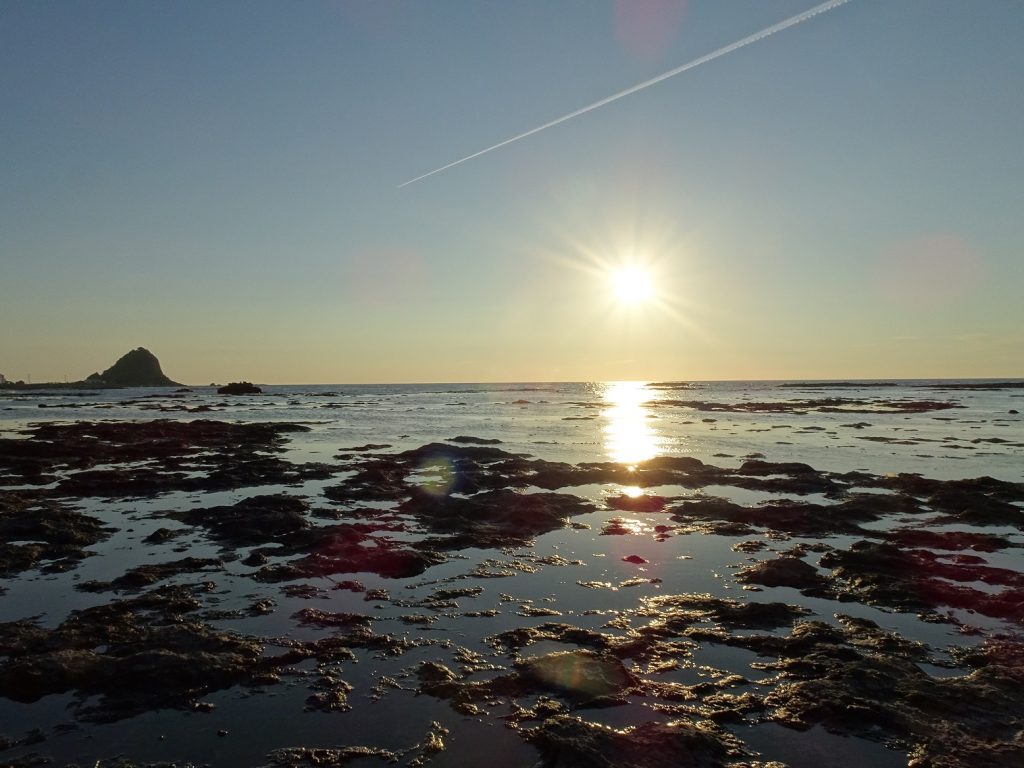
Access to Sado Island
- Ferry / jetfoil from Niigata Port
- Ferry from Naoetsu Port
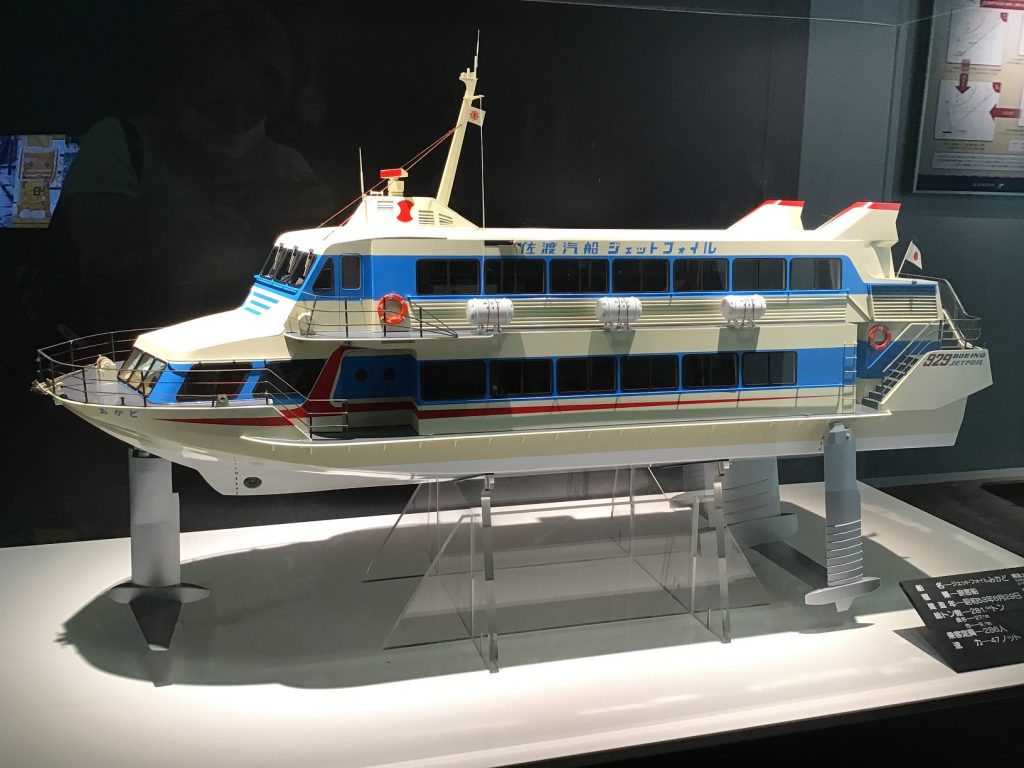
Enjoy fresh seafoods and Sake!
Arrangements we can make
- Creating an overall itinerary
- Transportation between mainland and remote islands
- Accommodation
- Transportation within the islands
- Transportation between islands
- Interpreter guide (mainly from Fukuoka or Nagasaki
** In addition to these actual expenses, each arrangement fee is required.
See “Commission for Arrangements“
Since the capacity of accommodation and vehicles for transportation within the island is limited, it is ideal to travel by small group up to 8 people.
In addition, since transportation on remote islands is easily affected by the weather, we recommend you traveling with plenty of time.
It’s inconvenient, but simple and kind.
Be sure to experience such the remote islands!
/// Cancellation Policy
Cancellation Policy for above course;
| Days to Departure | Cancellation Charge |
| More than 31 days | 5% of trip price |
| 30-15 days | 50% of trip price |
| 14-8 days | 80% of trip price |
| 7 days or Less, No Show | 100% of trip price |
Please refer to “Price, Terms and Conditions” for other detailed regulations.
/// Application Form
Please fill in the below box;
/// Payment
Payment can be settled by credit card (Paypal or Stripe).
After your booking, we will send you an invoice, then after your payment by credit card, the booking would be completed.
/// Contact
If you have any questions or offer to book, please send an email. We welcome even little questions! Don’t hesitate, and see you in Japan!!
Contact us: info@i-travel-square.tokyo
